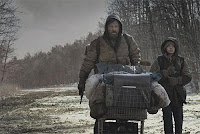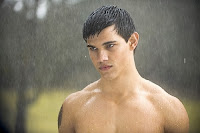 In preparation for our Vegan Smackdown 2010 (here’s our very first video podcast), I read Jonathan Safran Foer’s Eating Animals this past weekend. I’ve been a “selective omnivore” and a “passive vegetarian” for the majority of my life. Despite turning vegetarian when I was about twelve (in a shocking moment of tween tempestuous in response to my mother serving me a piece of almost-rare roast beef), I’ve always eaten fish (albeit with no regularity), and started eating chicken (from Rowe Farms or the Healthy Butcher) about a year ago.
In preparation for our Vegan Smackdown 2010 (here’s our very first video podcast), I read Jonathan Safran Foer’s Eating Animals this past weekend. I’ve been a “selective omnivore” and a “passive vegetarian” for the majority of my life. Despite turning vegetarian when I was about twelve (in a shocking moment of tween tempestuous in response to my mother serving me a piece of almost-rare roast beef), I’ve always eaten fish (albeit with no regularity), and started eating chicken (from Rowe Farms or the Healthy Butcher) about a year ago.
At first, it was about the animals — we grew up listening to “Meat is Murder” and were very into Morrisey. Then, when I was diagnosed with the disease and learned that too much protein was terribly hard on your kidneys, that sort of clenched it for me. The environmental concerns came last — for, like Safran Foer, I still had idyllic images of farmers in mind when I thought of chickens, cows and pigs. Fast Food Nation opened my eyes a little. The Omnivore’s Dilemma was also good. But Safran Foer’s book has had me thinking and mulling over my eating choices for days.
Sure, he’s making a point. Sure, he wants people to become vegetarians, that much is obvious. But even though I realize I’m being pursuaded by an incredibly convincing narrative, there are truths about this book that are unavoidable. We, as a society, do not think, properly debate with ourselves, about where things come from. We consume. We package. We shop. We eat. We sleep. We get up and do it all over again. And as so much of our lives has been managed for us by giant companies whose only responsibility seems to be to their shareholders, it seems impossible to try to step outside and make a difference.
Factory farming, as its described in the book, is abhorrent. The socio-economic, environmental and philosophical implications of being so separate from that which sustains us can’t but have an irrevocable impact on human society. That’s not to mention the impossible suffering that the animals who give their lives to ensure we get up, walk around, go to work, entertain ourselves and keep us healthy endure. Yes, I like to think I buy responsible meat (from a local butcher who sources from local farms when at the cottage; from The Heathy Butcher or Rowe’s in the city), I still can’t get my head around the fact that industry is ruining the sheer sustainability of our lives, of my nephew’s life.
The fact that we are destroying the ocean at record-breaking pace to keep shrimp on the table and frozen in aisles of the grocery store makes me furious. The fact that hundreds of thousands of species are decimated by fishing techniques makes me want to row entire populations out to the middle of the ocean so they can see what soon won’t be there. Imagine not seeing the whales in Tofino? Imagine sea horses being a thing of encyclopedias? I can’t. I don’t want to. Words matter. Calling senseless killing “by-product” doesn’t erase the fact that for every piece of fish on the table, hundreds needlessly litter the oceans because of impatient and irresponsible companies looking to make a profit. Is there sustainable fish to eat? I think I’m going to turn to Taras Grescoe’s Bottomfeeder for the answer. But, until then, I will not eat another piece of fish.
After our two-week Vegan Smackdown comes to a close, I’ll probably still continue to selectively eat what little chicken I do eat — but I’ll never buy it in a grocery store. I’ll never not take the time to make a separate trip to Rowe’s or the Healthy Butcher. And, it’s not like I do this anyway, but I certainly won’t be eating any chicken I absolutely don’t know the providence of.
I thought I was doing well by gardening. After all, growing my own food has given me a solid understanding of how much hard work goes in to keeping a garden that will actually feed me and my husband for most of the summer. It’s not easy. It’s worth celebrating every time a pull fresh green beans and steam them up for dinner. But knowing that the butter my RRHB smothers them with was made using factory farmed milk would turn their taste sour in my mouth. How can I avoid butter for the rest of my life? Is buying organic butter enough? Is it enough to do that small thing?
I don’t have any answers to the numerous questions the book brought to the forefront. It a persuasive, thoughtful, artful (if repetative in places) work that had me hunkered down when I should have been cleaning the house in preparation for my brother’s birthday. Here’s the thing — I’m an easy one to convince. I was already headed in the right direction. Here’s hoping that Jonathan Safran Foer finds an audience for his book outside of people like me, and his book can make a difference.
READING CHALLENGES: I’m continuing all of my 2009 challenges because I didn’t finish a single one. Here’s a book for The Better You Read, The Better You Get theme I set up last year.







